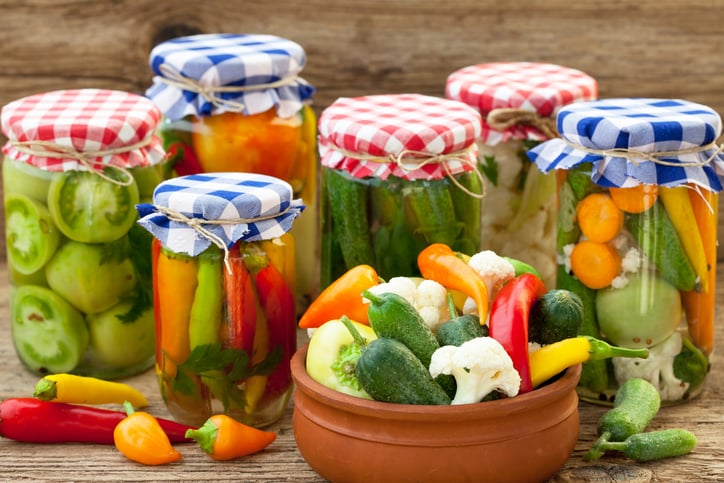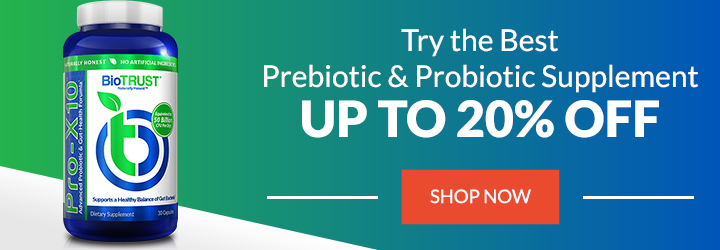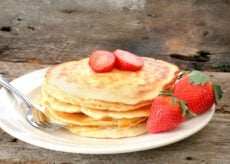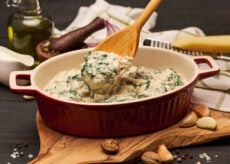How to Pickle Food at Home + 2 Simple Recipes

Peter Piper picked a peck of pickled peppers. How many times did you hear variations of this tongue twister growing up? Probably too many to count. But did you ever wonder what the heck a peck of pickled peppers was, or how one might go about pickling peppers?
It used to be that folks pickled foods as a means to preserve them; nowadays, people are pickling all types of fruits and vegetables to consume as relishes, side dishes, or even just as a snack mostly because they’re so delicious and nutritious.
One of the main reasons people pickle food at home is because pickling is a type of fermentation in which healthy bacteria help breakdown the more difficult to digest cellulose along with some of the natural sugars. This bacteria helps make the fermented food less likely to spoil and also delivers a dose of healthy bacteria into your gut when you enjoy it. Pickling may also help preserve your pepper’s (or other chosen vegetable) antioxidant power.
How to Pickle Food at Home
A peck (about 2 gallons) is a lot of pickles, yet the process to pickle food at home is actually rather simple, with only 4 key ingredients needed to create the perfect brine for your veggie of choice:
#1 Water. Since the water in my neck of the woods is questionable at best, I prefer to use purified water. This way it won’t interfere with the pickling process and also won’t discolor the vegetables over time.
#2 Vinegar. The type of vinegar you select is based on personal preference; I usually reach for a vinegar that is at least 5% acetic acid. The percentage is often listed on the label, and my rule of thumb is that as long as there is an equal amount of vinegar and water in the brine, you can add or subtract ingredients like salt or sugar to suit your taste buds.
#3 Salt. All salts are not created equal, and this is something I learned the hard way. There is a special type of salt that is labeled “canning” or “pickling” salt. This works for pickling, as does sea salt. Unfortunately, the additives in standard table salt may make the brine cloudy, and nobody wants a cloudy brine.
#4 Spices. This is where you can get a little creative. By adding in a mixture of dry spices, along with additional flavors, you can alter the flavor profile considerably. And keep in mind the longer your jars remain in the refrigerator, the more flavorful the veggie.
My Go-To Pickling Concoctions
The following is an example of one of my go-to pickling concoctions:
Dry Spices:
- 1 bay leaf
- 1/2 tsp celery seed
- 1 – 3 small whole dried chili peppers
- 1/2 tsp cumin seed
- 1/2 tsp dill seed
- 1/2 tsp mustard seed
- 1/2 tsp pickling spice
- 1/2 tsp turmeric
Additional Flavors:
- 1 jalapeño pepper
- 2 – 4 sprigs dill
- 1/2 – 1 whole large clove garlic
- Two 3-inch strips fresh horseradish
- 1 sprig fresh oregano
- 1 Tbsp sliced shallot
If you are somewhat hesitant to go full throttle and complete the whole process of canning, you can begin your “pickle food at home journey” with this basic recipe. And who doesn’t like pickles?
2 Simple Pickled Food Recipes
Basic Refrigerator Pickles
Ingredients:
- 4 large cucumbers
- 3 cups distilled white vinegar
- 3 cups water
- 2 Tbsp plus 2 tsp pickling salt
- 2 Tbsp sugar
Directions:
- Slice cucumbers however you prefer (horizontally or vertically; spears or slices).
- Divide cucumbers into jars evenly.
- Add spices to your liking (however, they’re not necessary for basic pickles).
- Bring vinegar, water, salt, and sugar to a boil and stir until the salt is dissolved.
- Remove from the heat and pour mixture evenly over cucumbers in jars.
- Tightly put the lids on the jars and refrigerate.
Now that we have covered the basics, let’s dig into the process of canning with some peppers.
Canned Pickled Peppers
To make canned pickled peppers, you will need the 4 key pickling ingredients mentioned above: water, vinegar, salt, and spices. In addition, there is one extra step involved, and that is a water bath. This is a process of submerging your jars into boiling hot water (212 degrees) for approximately 10 minutes to seal the jars and prevent any bad bacteria from forming in the jars. Here is a good instruction list for a canning water bath.
For this recipe, I went with a very basic combination of celery seed and mustard seed. I also opted for a variety of colored bell peppers—the crisper the better.
Ingredients:
- 3 lbs peppers
- 5 cups cider vinegar
- 1¼ cups water
- 5 tsp canning salt
- 2 Tbsp celery seed
- 4 Tbsp mustard seed
Directions:
- Wash and prepare peppers—slicing however you prefer (rings or strips).
- Place 1/2 Tbsp celery seed and 1 Tbsp mustard seed in each pint jar.
- Pack peppers into jars.
- In a large pot, combine vinegar, water, and salt and bring to a boil.
- Pour brine mixture over top of peppers and tightly seal the jars.
- Add jars to the water bath for approximately 10 minutes (times may vary depending on the altitude).
- Once jars have been removed from the water bath and are cooled, press the seal on the lid of the jars.
- Store in a cool dark place for up to 1 year.
So, there you have it. Peter Piper isn’t the only one who can pickle peppers. With this handy how to pickle food at home guide, you too can pickle all sorts of things—not just peppers.
Special Offer:Get MetaboGreens up to 20% OFF (very limited inventory)






